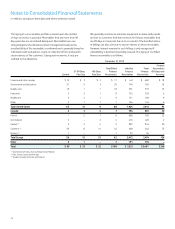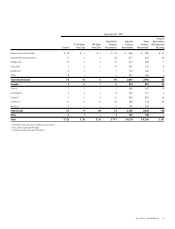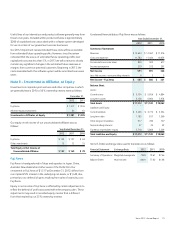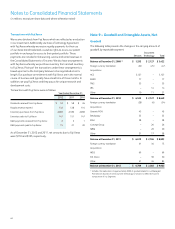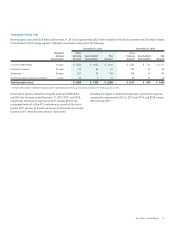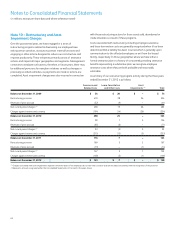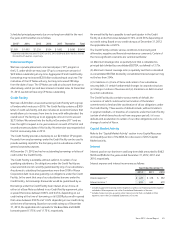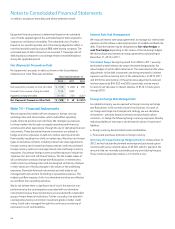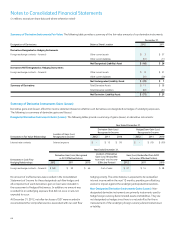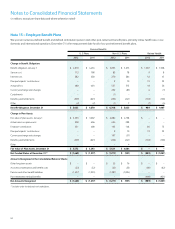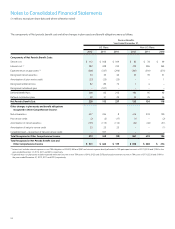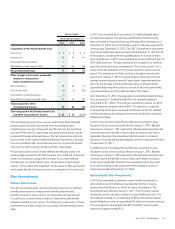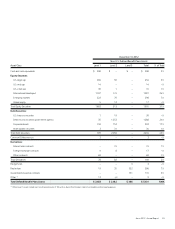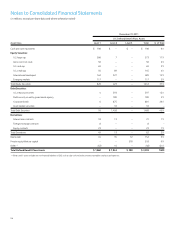Xerox 2012 Annual Report Download - page 88
Download and view the complete annual report
Please find page 88 of the 2012 Xerox annual report below. You can navigate through the pages in the report by either clicking on the pages listed below, or by using the keyword search tool below to find specific information within the annual report.
Notes to Consolidated Financial Statements
(in millions, except per-share data and where otherwise noted)
86
Interest Rate Risk Management
We may use interest rate swap agreements to manage our interest rate
exposure and to achieve a desired proportion of variable and fixed rate
debt. These derivatives may be designated as fair value hedges or
cash flow hedges depending on the nature of the risk being hedged.
We did not have any interest rate swap agreements outstanding at
December 31, 2012 or 2011.
Terminated Swaps: During the period from 2004 to 2011, we early
terminated several interest rate swaps that were designated as fair
value hedges of certain debt instruments. The associated net fair value
adjustments to the debt instruments are being amortized to interest
expense over the remaining term of the related notes. In 2012, 2011
and 2010, the amortization of these fair value adjustments reduced
interest expense by $49, $53 and $28, respectively, and we expect
to record a net decrease in interest expense of $142 in future years
through 2018.
Foreign Exchange Risk Management
As a global company, we are exposed to foreign currency exchange
rate fluctuations in the normal course of our business. As a part of
our foreign exchange risk management strategy, we use derivative
instruments – primarily forward contracts and purchased option
contracts – to hedge the following foreign currency exposures, thereby
reducing volatility of earnings or protecting fair values of assets and
liabilities:
• Foreign currency-denominated assets and liabilities
• Forecasted purchases and sales in foreign currency
Summary of Foreign Exchange Hedging Positions: At December 31,
2012, we had outstanding forward exchange and purchased option
contracts with gross notional values of $3,505, which is typical of the
amounts that are normally outstanding at any point during the year.
These contracts generally mature in 12 months or less.
Equipment financing interest is determined based on an estimated
cost of funds, applied against the estimated level of debt required to
support our net finance receivables. The estimated cost of funds is
based on our overall corporate cost of borrowing adjusted to reflect a
rate that would be paid by a typical BBB rated leasing company. The
estimated level of debt is based on an assumed 7:1 leverage ratio of
debt/equity as compared to our average finance receivable balance
during the applicable period.
Net (Payments) Proceeds on Debt
Net (payments) proceeds on debt as shown on the Consolidated
Statements of Cash Flows was as follows:
Year Ended December 31,
2012 2011 2010
Net (payments) proceeds on short-term debt $ (108) $ (200) $ 300
Proceeds from issuance of long-term debt 1,116 1,000 –
Payments on long-term debt (1,116) (751) (3,357)
Net (Payments) Proceeds on Other Debt $ (108) $ 49 $ (3,057)
Note 13 – Financial Instruments
We are exposed to market risk from changes in foreign currency
exchange rates and interest rates, which could affect operating
results, financial position and cash flows. We manage our exposure
to these market risks through our regular operating and financing
activities and, when appropriate, through the use of derivative financial
instruments. These derivative financial instruments are utilized to
hedge economic exposures, as well as to reduce earnings and cash
flow volatility resulting from shifts in market rates. We enter into limited
types of derivative contracts, including interest rate swap agreements,
foreign currency spot, forward and swap contracts and net purchased
foreign currency options to manage interest rate and foreign currency
exposures. Our primary foreign currency market exposures include the
Japanese Yen, Euro and U.K. Pound Sterling. The fair market values of
all our derivative contracts change with fluctuations in interest rates
and/or currency exchange rates and are designed so that any changes
in their values are offset by changes in the values of the underlying
exposures. Derivative financial instruments are held solely as risk
management tools and not for trading or speculative purposes. The
related cash flow impacts of all of our derivative activities are reflected
as cash flows from operating activities.
We do not believe there is significant risk of loss in the event of non-
performance by the counterparties associated with our derivative
instruments because these transactions are executed with a diversified
group of major financial institutions. Further, our policy is to deal with
counterparties having a minimum investment grade or better credit
rating. Credit risk is managed through the continuous monitoring of
exposures to such counterparties.


